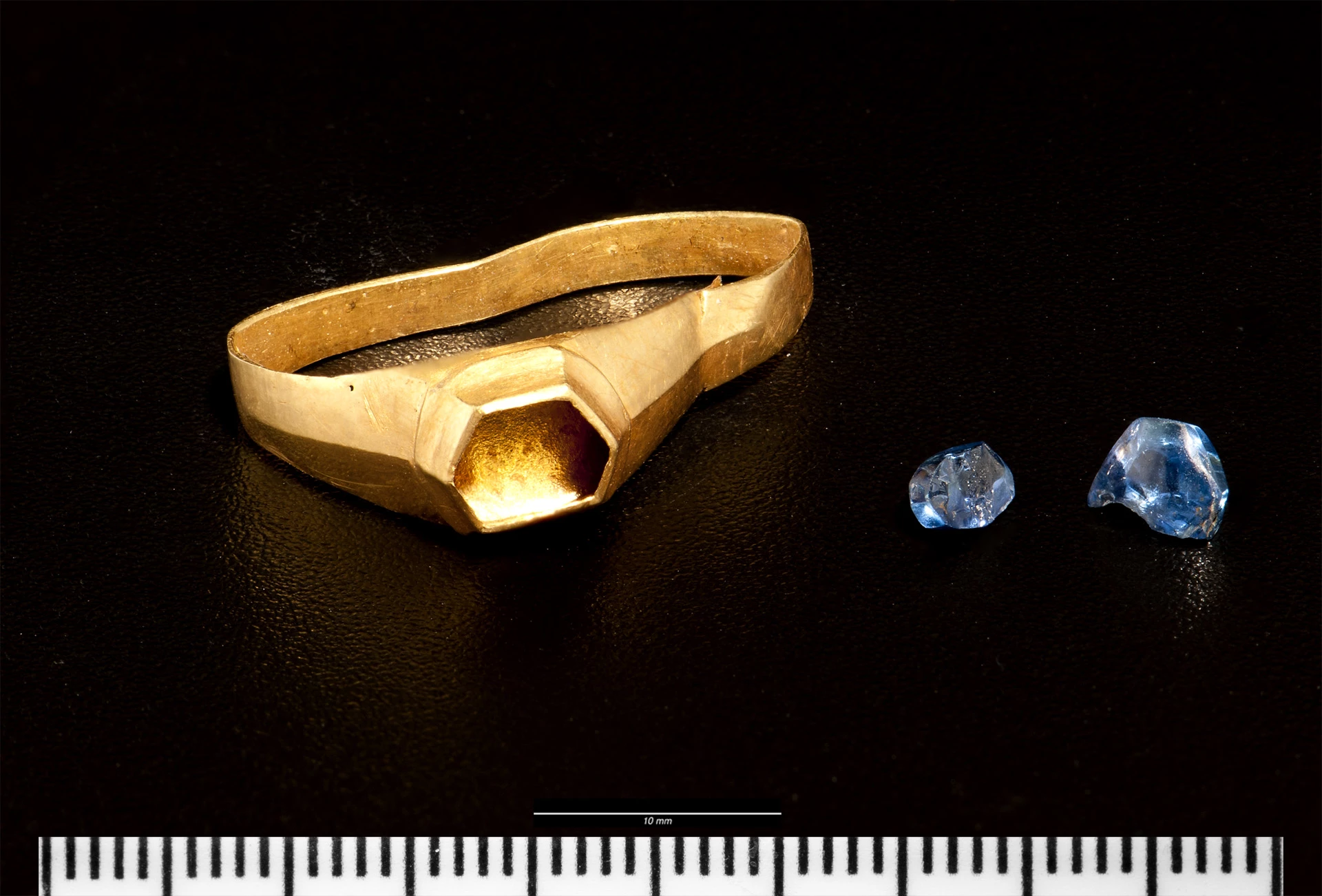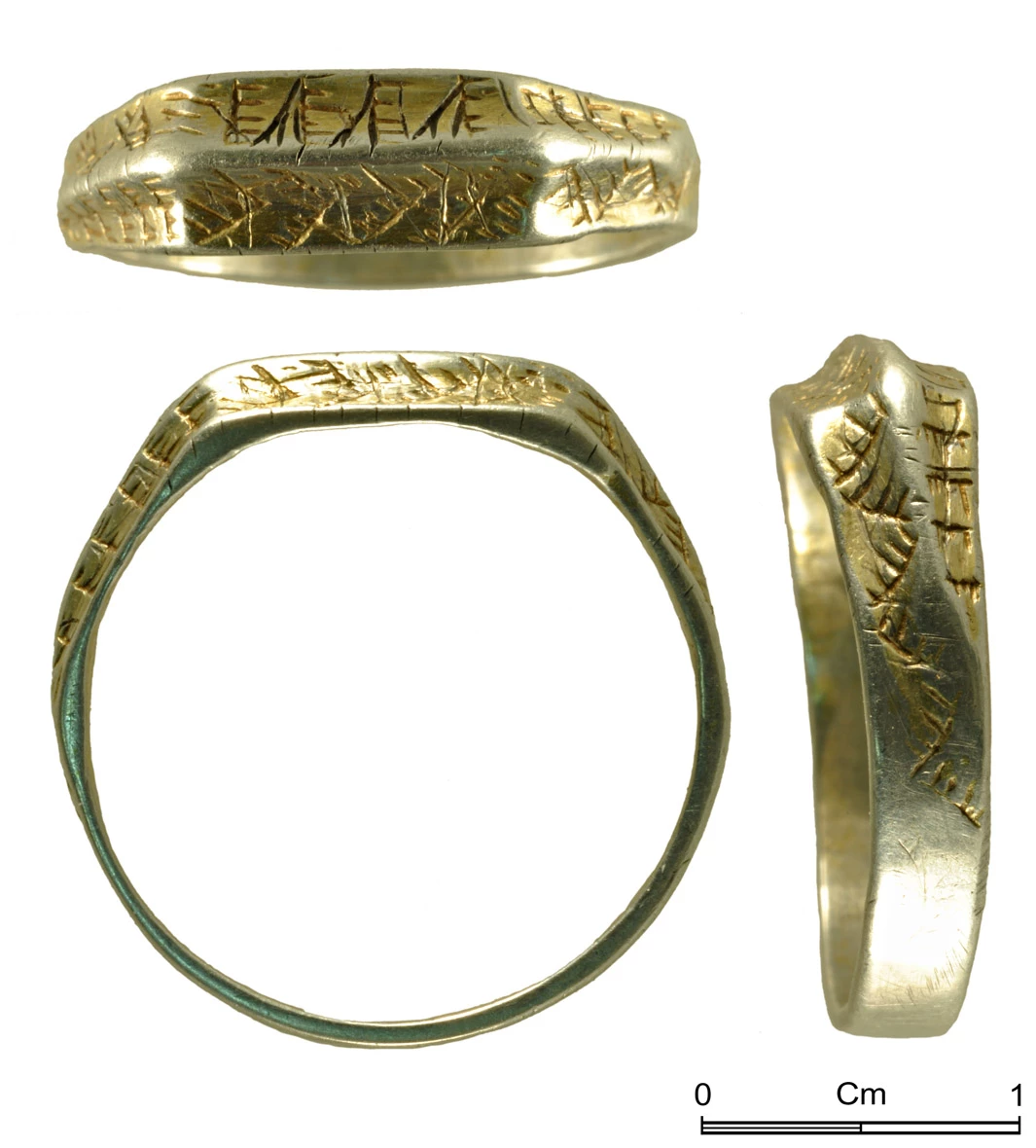Decorative Rings
Gold and sapphire ring from Pembroke
Decorative ring from Gileston
Decorative ring from Holt
The final group of rings in this account are much more protective of their secrets. Lacking mottoes or symbols, they are largely decorative in form, and although they may well have had personal significance for their owners, unfortunately we now have no way of uncovering what this could have been. A particularly fine example is the gold and sapphire ring found at Pembroke by Mr Kevin Higgs in February 2014. The sapphire is polished (known as a cabochon), rather than cut, as was common in the Middle Ages, and is placed in a hexagonal setting. Unfortunately, the sapphire has broken in two and has come out of the setting, but it is still clear to see its beauty. Sapphires were imported from Sri Lanka and were thought to have the ability to cure headaches and other ailments and to protect against witchcraft, so maybe this ring’s purpose was not entirely decorative after all.
Such an expensive import from the very edge of the known world must have belonged to a very wealthy individual, and it is tempting to speculate that it could have belonged to an inhabitant of Pembroke Castle or the nearby priory. The majority of the other rings in this category, however, lack stones and were decorated only with a series of patterns, ranging from the irregular, crude cross-hatching on a 15th century silver-gilt example discovered near Gileston, Vale of Glamorgan by Mr Mark Watson in 2011, to the sleek, understated band of pellets and raised borders on an early Tudor gold ring found at Holt in 2013 by Mr A. E. Jenkins.


